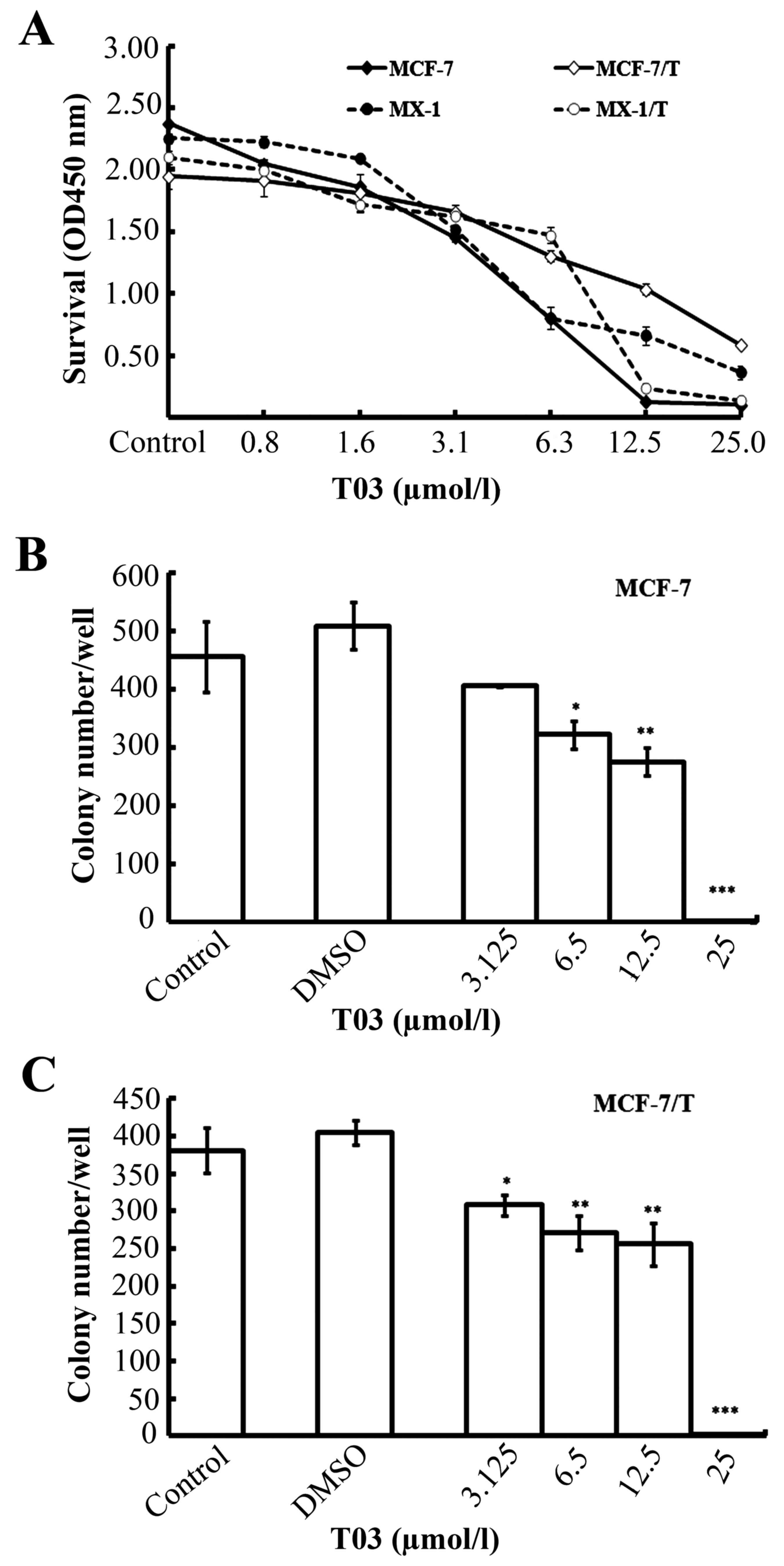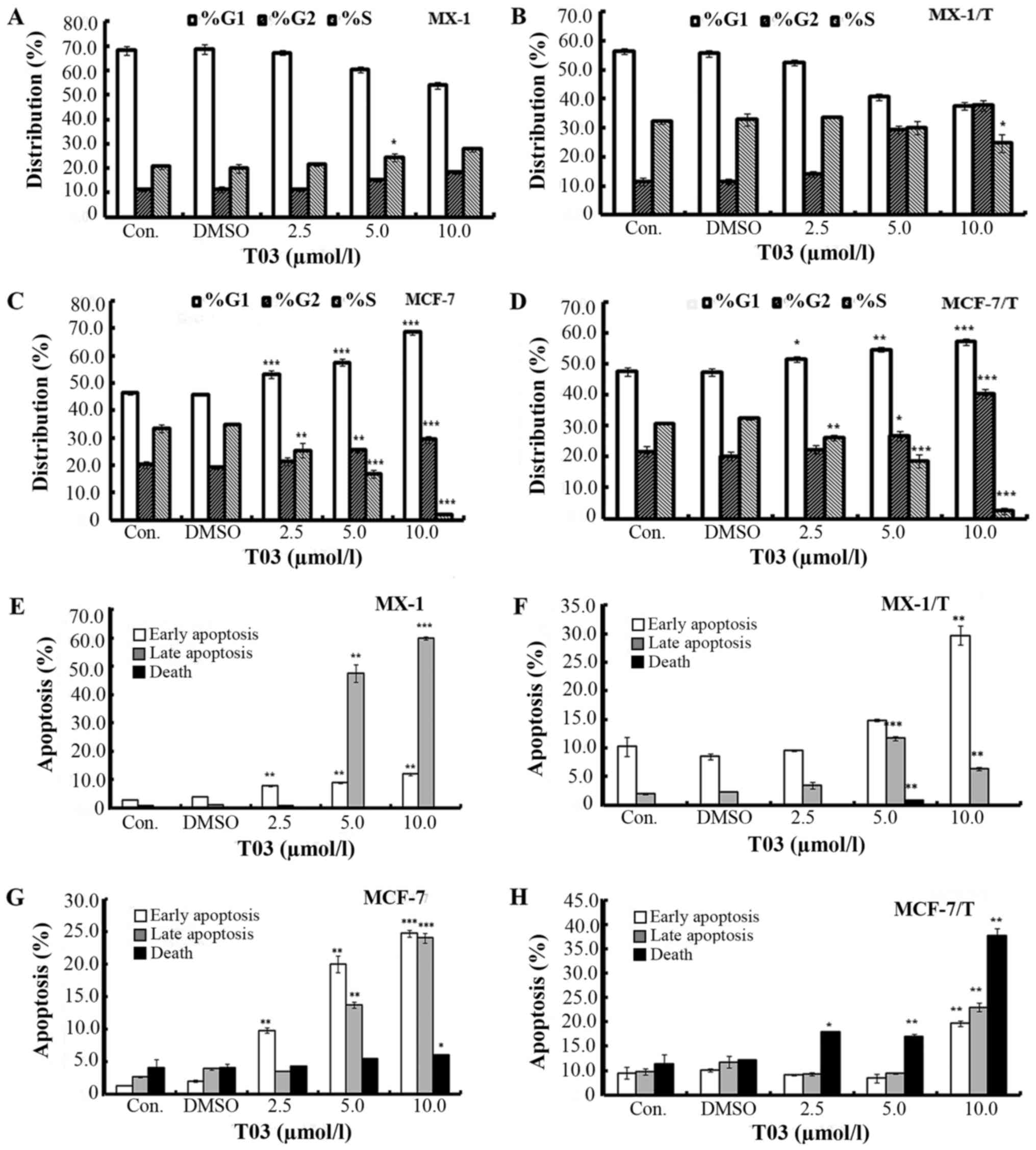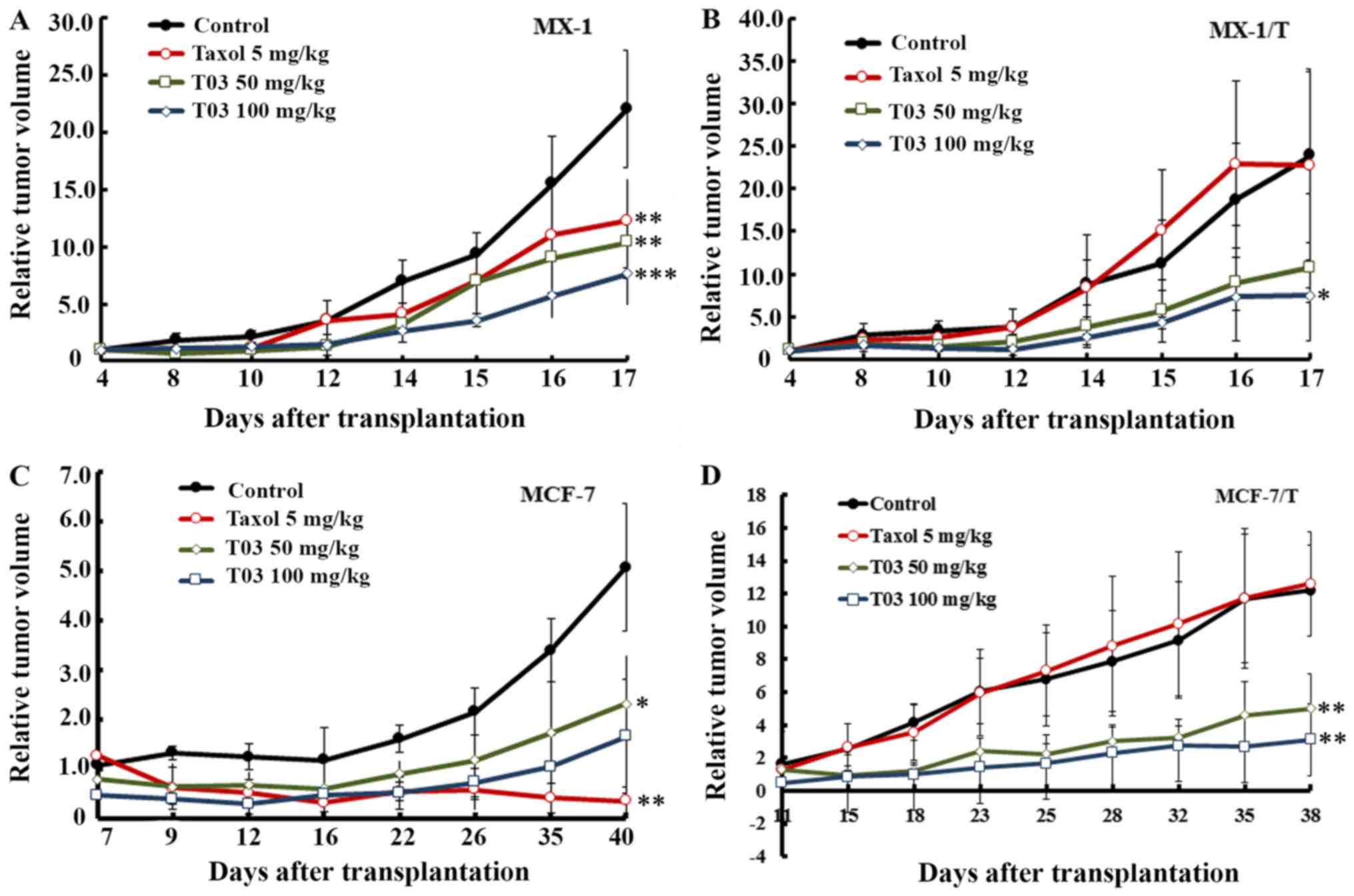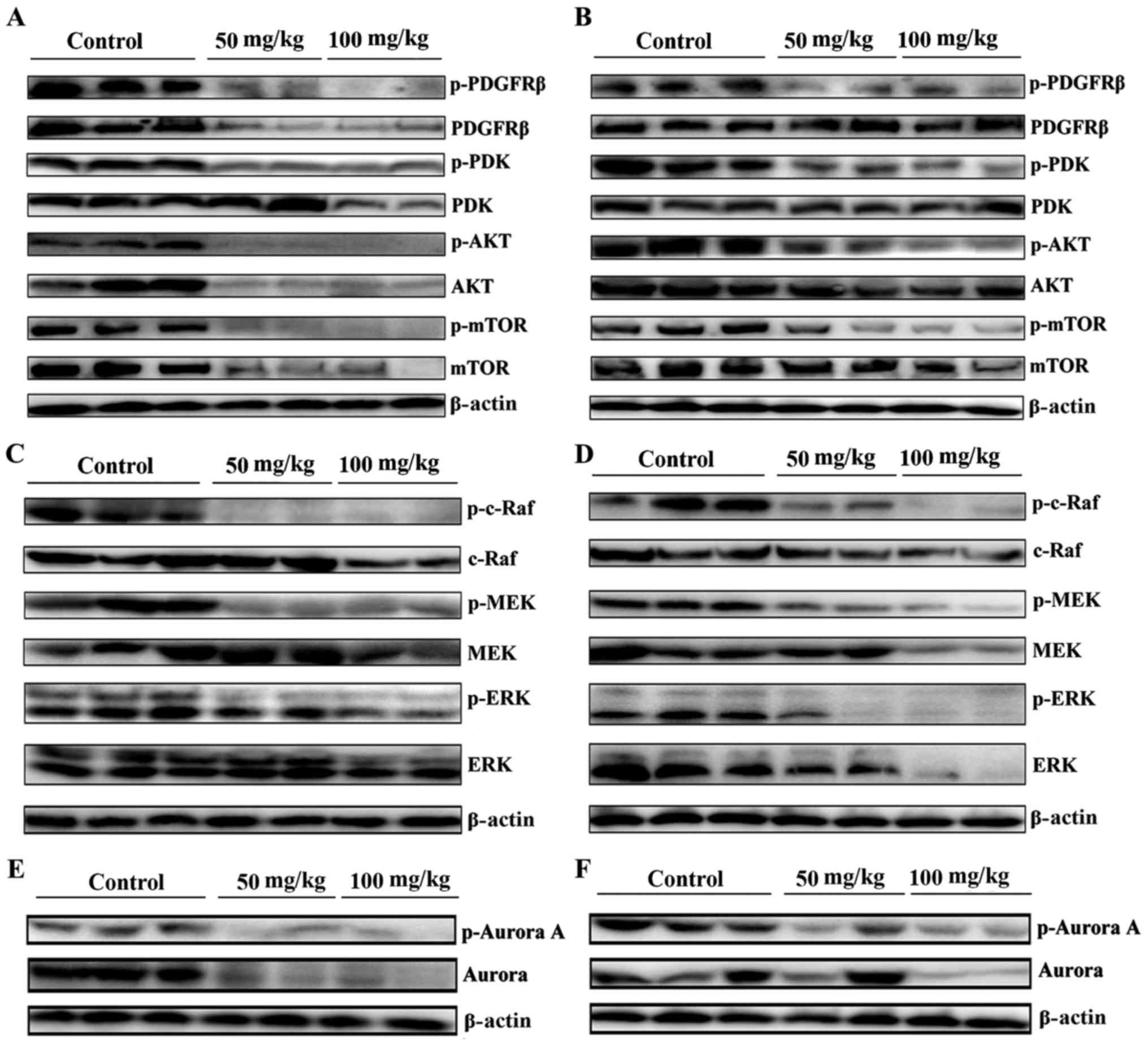|
1
|
Reese JM, Suman VJ, Subramaniam M, Wu X,
Negron V, Gingery A, Pitel KS, Shah SS, Cunliffe HE, McCullough AE,
et al: ERβ1: Characterization, prognosis, and evaluation of
treatment strategies in ERα-positive and -negative breast cancer.
BMC Cancer. 14:7492014. View Article : Google Scholar : PubMed/NCBI
|
|
2
|
Nahta R, Hortobágyi GN and Esteva FJ:
Growth factor receptors in breast cancer: Potential for therapeutic
intervention. Oncologist. 8:5–17. 2003. View Article : Google Scholar : PubMed/NCBI
|
|
3
|
Vlahovic G and Crawford J: Activation of
tyrosine kinases in cancer. Oncologist. 8:531–538. 2003. View Article : Google Scholar : PubMed/NCBI
|
|
4
|
Niehoff P, Mundhenke C, Kimmig B and Maas
N: Breast irradiation with brachytherapy: Approved techniques and
new concepts. Minerva Ginecol. 59:377–386. 2007.PubMed/NCBI
|
|
5
|
Hubbard SR: Juxtamembrane autoinhibition
in receptor tyrosine kinases. Nat Rev Mol Cell Biol. 5:464–471.
2004. View
Article : Google Scholar : PubMed/NCBI
|
|
6
|
Shchemelinin I, Sefc L and Necas E:
Protein kinase inhibitors. Folia Biol (Praha). 52:137–148.
2006.PubMed/NCBI
|
|
7
|
Weigel MT, Meinhold-Heerlein I,
Bauerschlag DO, Schem C, Bauer M, Jonat W, Maass N and Mundhenke C:
Combination of imatinib and vinorelbine enhances cell growth
inhibition in breast cancer cells via PDGFR beta signalling. Cancer
Lett. 273:70–79. 2009. View Article : Google Scholar : PubMed/NCBI
|
|
8
|
Weigel MT, Banerjee S, Arnedos M, Salter
J, A'Hern R, Dowsett M and Martin LA: Enhanced expression of the
PDGFR/Abl signaling pathway in aromatase inhibitor-resistant breast
cancer. Ann Oncol. 24:126–133. 2013. View Article : Google Scholar : PubMed/NCBI
|
|
9
|
Lin HJ, Hsieh FC, Song H and Lin J:
Elevated phosphorylation and activation of PDK-1/AKT pathway in
human breast cancer. Br J Cancer. 93:1372–1381. 2005. View Article : Google Scholar : PubMed/NCBI
|
|
10
|
Weigel MT, Dahmke L, Schem C, Bauerschlag
DO, Weber K, Niehoff P, Bauer M, Strauss A, Jonat W, Maass N and
Mundhenke C: In vitro effects of imatinib mesylate on
radiosensitivity and chemosensitivity of breast cancer cells. BMC
Cancer. 10:4122010. View Article : Google Scholar : PubMed/NCBI
|
|
11
|
Sridhar SS, Hedley D and Siu LL: Raf
kinase as a target for anticancer therapeutics. Mol Cancer Ther.
4:677–685. 2005. View Article : Google Scholar : PubMed/NCBI
|
|
12
|
Li Z, Min W and Gou J: Knockdown of
cyclophilin A reverses paclitaxel resistance in human endometrial
cancer cells via suppression of MAPK kinase pathways. Cancer
Chemother Pharmacol. 72:1001–1011. 2013. View Article : Google Scholar : PubMed/NCBI
|
|
13
|
Gong Y, He H, Liu H, Zhang C, Zhao W and
Shao RG: Phosphorylation of myofibrillogenesis regulator-1
activates the MAPK signaling pathway and induces proliferation and
migration in human breast cancer MCF7 cells. FEBS Lett.
588:2903–2910. 2014. View Article : Google Scholar : PubMed/NCBI
|
|
14
|
Hashimoto K, Tsuda H, Koizumi F, Shimizu
C, Yonemori K, Ando M, Kodaira M, Yunokawa M, Fujiwara Y and Tamura
K: Activated PI3K/AKT and MAPK pathways are potential good
prognostic markers in node-positive, triple-negative breast cancer.
Ann Oncol. 25:1973–1979. 2014. View Article : Google Scholar : PubMed/NCBI
|
|
15
|
Heckler MM, Thakor H, Schafer CC and
Riggins RB: ERK/MAPK regulates ERRγ expression, transcriptional
activity and receptor-mediated tamoxifen resistance in ER+ breast
cancer. FEBS J. 281:2431–2442. 2014. View Article : Google Scholar : PubMed/NCBI
|
|
16
|
Im NK, Jang WJ, Jeong CH and Jeong GS:
Delphinidin suppresses PMA-induced MMP-9 expression by blocking the
NF-κB activation through MAPK signaling pathways in MCF-7 human
breast carcinoma cells. J Med Food. 17:855–861. 2014. View Article : Google Scholar : PubMed/NCBI
|
|
17
|
Saini KS, Loi S, de Azambuja E,
Metzger-Filho O, Saini ML, Ignatiadis M, Dancey JE and
Piccart-Gebhart MJ: Targeting the PI3K/AKT/mTOR and Raf/MEK/ERK
pathways in the treatment of breast cancer. Cancer Treat Rev.
39:935–946. 2013. View Article : Google Scholar : PubMed/NCBI
|
|
18
|
Lu J, Tan M, Huang WC, Li P, Guo H, Tseng
LM, Su XH, Yang WT, Treekitkarnmongkol W, Andreeff M, et al:
Mitotic deregulation by survivin in ErbB2-overexpressing breast
cancer cells contributes to Taxol resistance. Clin Cancer Res.
15:1326–3134. 2009. View Article : Google Scholar : PubMed/NCBI
|
|
19
|
Li Y, Tang K, Zhang H, Zhang Y, Zhou W and
Chen X: Function of Aurora kinase A in Taxol-resistant breast
cancer and its correlation with P-gp. Mol Med Rep. 4:739–746.
2011.PubMed/NCBI
|
|
20
|
Wilhelm SM, Carter C, Tang L, Wilkie D,
McNabola A, Rong H, Chen C, Zhang X, Vincent P, McHugh M, et al:
BAY 43–9006 exhibits broad spectrum oral antitumor activity and
targets the RAF/MEK/ERK pathway and receptor tyrosine kinases
involved in tumor progression and angiogenesis. Cancer Res.
64:7099–7109. 2004. View Article : Google Scholar : PubMed/NCBI
|
|
21
|
Li Y, Zhang ZF, Chen J, Huang D, Ding Y,
Tan MH, Qian CN, Resau JH, Kim H and Teh BT: VX680/MK-0457, a
potent and selective Aurora kinase inhibitor, targets both tumor
and endothelial cells in clear cell renal cell carcinoma. Am J
Transl Res. 2:296–308. 2010.PubMed/NCBI
|
|
22
|
Reynolds TH IV, Bodine SC and Lawrence JC
Jr: Control of Ser2448 phosphorylation in the mammalian target of
rapamycin by insulin and skeletal muscle load. J Biol Chem.
277:17657–17662. 2002. View Article : Google Scholar : PubMed/NCBI
|
|
23
|
Salmond RJ, Emery J, Okkenhaug K and
Zamoyska R: MAPK, phosphatidylinositol 3-kinase, and mammalian
target of rapamycin pathways converge at the level of ribosomal
protein S6 phosphorylation to control metabolic signaling in CD8 T
cells. J Immunol. 183:7388–7397. 2009. View Article : Google Scholar : PubMed/NCBI
|
|
24
|
Biran A, Brownstein M, Haklai R and Kloog
Y: Downregulation of survivin and aurora A by histone deacetylase
and RAS inhibitors: A new drug combination for cancer therapy. Int
J Cancer. 128:691–701. 2011. View Article : Google Scholar : PubMed/NCBI
|
|
25
|
Kim BK, Lee JW, Park PJ, Shin YS, Lee WY,
Lee KA, Ye S, Hyun H, Kang KN, Yeo D, et al: The multiplex bead
array approach to identifying serum biomarkers associated with
breast cancer. Breast Cancer Res. 11:R222009. View Article : Google Scholar : PubMed/NCBI
|
|
26
|
de Jong JS, van Diest PJ, van der Valk P
and Baak JP: Expression of growth factors, growth-inhibiting
factors, and their receptors in invasive breast cancer. II:
Correlations with proliferation and angiogenesis. J Pathol.
184:53–57. 1998. View Article : Google Scholar : PubMed/NCBI
|
|
27
|
Lev DC, Kim SJ, Onn A, Stone V, Nam DH,
Yazici S, Fidler IJ and Price JE: Inhibition of platelet-derived
growth factor receptor signaling restricts the growth of human
breast cancer in the bone of nude mice. Clin Cancer Res.
11:306–314. 2005.PubMed/NCBI
|
|
28
|
Klos KS, Wyszomierski SL, Sun M, Tan M,
Zhou X, Li P, Yang W, Yin G, Hittelman WN and Yu D: ErbB2 increases
vascular endothelial growth factor protein synthesis via activation
of mammalian target of rapamycin/p70S6K leading to increased
angiogenesis and spontaneous metastasis of human breast cancer
cells. Cancer Res. 66:2028–2037. 2006. View Article : Google Scholar : PubMed/NCBI
|
|
29
|
Wen XF, Yang G, Mao W, Thornton A, Liu J,
Bast RC Jr and Le XF: HER2 signaling modulates the equilibrium
between pro- and antiangiogenic factors via distinct pathways:
Implications for HER2-targeted antibody therapy. Oncogene.
25:6986–6996. 2006. View Article : Google Scholar : PubMed/NCBI
|
|
30
|
Seymour L and Bezwoda WR: Positive
immunostaining for platelet derived growth factor (PDGF) is an
adverse prognostic factor in patients with advanced breast cancer.
Breast Cancer Res Treat. 32:229–233. 1994. View Article : Google Scholar : PubMed/NCBI
|
|
31
|
Blagosklonny MV and Fojo T: Molecular
effects of paclitaxel: Myths and reality (a critical review). Int J
Cancer. 83:151–156. 1999. View Article : Google Scholar : PubMed/NCBI
|
|
32
|
Langley RR, Fan D, Tsan RZ, Rebhun R, He
J, Kim SJ and Fidler IJ: Activation of the platelet-derived growth
factor-receptor enhances survival of murine bone endothelial cells.
Cancer Res. 64:3727–3730. 2004. View Article : Google Scholar : PubMed/NCBI
|
|
33
|
Sambade MJ, Camp JT, Kimple RJ, Sartor CI
and Shields JM: Mechanism of lapatinib-mediated radiosensitization
of breast cancer cells is primarily by inhibition of the
Raf>MEK>ERK mitogen-activated protein kinase cascade and
radiosensitization of lapatinib-resistant cells restored by direct
inhibition of MEK. Radiother Oncol 93: 639–644, 2009. Radiother
Oncol 93: 639–644, 2009. 93: 639–644, 2009:639-644, 2009–644, 2009.
2009.
|
|
34
|
Frogne T, Benjaminsen RV, Sonne-Hansen K,
Sorensen BS, Nexo E, Laenkholm AV, Rasmussen LM, Riese DJ II, de
Cremoux P, Stenvang J and Lykkesfeldt AE: Activation of ErbB3, EGFR
and Erk is essential for growth of human breast cancer cell lines
with acquired resistance to fulvestrant. Breast Cancer Res Treat.
114:263–275. 2009. View Article : Google Scholar : PubMed/NCBI
|
|
35
|
Lian WJ, Liu G, Liu YJ, Zhao ZW, Yi T and
Zhou HY: Downregulation of BMP6 enhances cell proliferation and
chemoresistance via activation of the ERK signaling pathway in
breast cancer. Oncol Rep. 30:193–200. 2013. View Article : Google Scholar : PubMed/NCBI
|
|
36
|
Sokolosky M, Chappell WH, Stadelman K,
Abrams SL, Davis NM, Steelman LS and McCubrey JA: Inhibition of
GSK-3β activity can result in drug and hormonal resistance and
alter sensitivity to targeted therapy in MCF-7 breast cancer cells.
Cell Cycle. 13:820–833. 2014. View Article : Google Scholar : PubMed/NCBI
|
|
37
|
D'Assoro AB, Liu T, Quatraro C, Amato A,
Opyrchal M, Leontovich A, Ikeda Y, Ohmine S, Lingle W, Suman V, et
al: The mitotic kinase Aurora-a promotes distant metastases by
inducing epithelial-to-mesenchymal transition in ERα(+) breast
cancer cells. Oncogene. 33:599–610. 2014. View Article : Google Scholar : PubMed/NCBI
|
|
38
|
Anand S, Penrhyn-Lowe S and Venkitaraman
AR: AURORA-A amplification overrides the mitotic spindle assembly
checkpoint, inducing resistance to Taxol. Cancer Cell. 3:51–62.
2003. View Article : Google Scholar : PubMed/NCBI
|
|
39
|
Kwiatkowski N, Deng X, Wang J, Tan L,
Villa F, Santaguida S, Huang HC, Mitchison T, Musacchio A and Gray
N: Selective aurora kinase inhibitors identified using a
taxol-induced checkpoint sensitivity screen. ACS Chem Biol.
7:185–196. 2012. View Article : Google Scholar : PubMed/NCBI
|
|
40
|
Horowitz JC, Lee DY, Waghray M, Keshamouni
VG, Thomas PE, Zhang H, Cui Z and Thannickal VJ: Activation of the
pro-survival phosphatidylinositol 3-kinase/AKT pathway by
transforming growth factor-beta1 in mesenchymal cells is mediated
by p38 MAPK-dependent induction of an autocrine growth factor. J
Biol Chem. 279:1359–1367. 2004. View Article : Google Scholar : PubMed/NCBI
|
|
41
|
Arany I, Faisal A, Nagamine Y and
Safirstein RL: p66shc inhibits pro-survival epidermal growth factor
receptor/ERK signaling during severe oxidative stress in mouse
renal proximal tubule cells. J Biol Chem. 283:6110–6117. 2008.
View Article : Google Scholar : PubMed/NCBI
|













